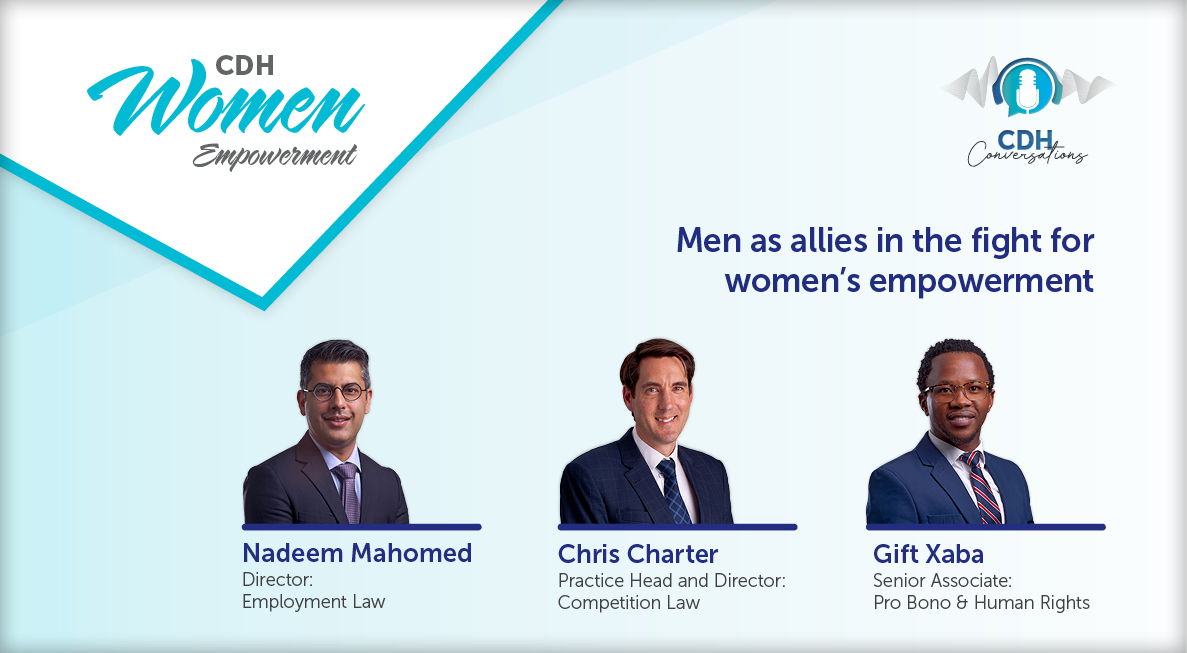Same law, different interpretation: The Tax Court considers the issue of condonation in the context of default judgment
At a glance
- In a Tax Court judgment (IT45935), it was concluded that the interpretation of Rule 56, read with Rules 4 and 52, differed from a previous judgment (IT25117) on a similar question. The court found in favor of the South African Revenue Service (SARS), stating that the defaulting party must fail to remedy the default within the 15-day notice period for the innocent party to apply for a final order.
- The Tax Court rejected the taxpayer's argument that Rule 52(6) requires a late-delivered statement to be accompanied by a condonation application and emphasized that Rule 56(1)(a) containing the 15-day notice requirement should not be rendered superfluous.
- The conflicting interpretations of the rules have created uncertainty for taxpayers, and the best practical approach in similar cases remains unclear. Consideration should be given to delivering the Rule 56 notice promptly to avoid delays and potential costs. The possibility of an appeal and its outcome may shape the interpretation to be followed by other tax courts.
However, as our readers may know, Tax Court judgments do not create a precedent. In other words, a Tax Court judgment is not binding on other tax courts. Pursuant to this, on 23 March 2023 in Taxpayer v Commissioner for the South African Revenue Service (IT45935) [2023] ZATC 2, where the Tax Court was faced with the same question raised in IT25117, it reached a different conclusion. We discuss this judgment (IT45935) here.
Legal context
Rule 56(1), both under the old and new rules published on 10 March 2023 (see our Tax and Exchange Control Alert of 23 March 2023), provides for SARS and a taxpayer to apply to the Tax Court for default judgment, where either party has failed to comply with a period or obligation under the Rules. However, the applicant must first deliver a notice informing the defaulting party of its intention to apply for a final order under section 129(2) of the TAA, if the defaulting party does not remedy the default within 15 days of delivery of the notice. The 15-day period refers to 15 business days.
Considering the timing of the application, it appears that the Tax Court’s judgment was based on the Rules as they read prior to 10 March 2023.
Facts
Similar to the facts in IT25117, in the current matter (IT45935), the taxpayer delivered a notice in terms of Rule 56(1)(a) and SARS delivered its outstanding pleading, its Rule 31 statement of grounds of assessment, within the 15-day period provided for in the notice. In the current matter the taxpayer noted an appeal on 12 April 2019 with the matter being referred to alternative dispute resolution (ADR), but not resolved in terms of that process. The ADR process was terminated and SARS was given an extension until 13 October 2021 to deliver its Rule 31 statement, but failed to deliver it by this date. The taxpayer then delivered a notice in terms of Rule 56(1)(a) on 3 March 2022 and SARS delivered its Rule 31 statement within the 15-day period provided for in the notice.
In the current matter (as was the case in IT25117), the taxpayer also brought an application in terms of Rule 30, arguing that the delivery of the Rule 31 statement, albeit before expiry of the 15-day notice period, constituted an irregular step.
Judgment
The Tax Court’s judgment was based on its interpretation of Rule 56, read with Rules 4 and 52 of the Rules. Rule 4, which deals with extension of time periods, states, amongst other things, that a period in the Rules may be extended by agreement between the parties, except where the extension of a period prescribed under the TAA or the Rules is otherwise regulated in Chapter 9 of the TAA or the Rules.
Rule 52(6) states that a party who failed to deliver a statement as and when required under Rule 31, may apply to the tax court for an order condoning the failure to deliver the statement and the determination of a further period within which the statement may be delivered.
Rule 56(2) states, amongst other things, that the tax court may, on hearing an application for default judgment, make a final order in terms of section 129(2) of the TAA if the defaulting party cannot show good cause, or give an order compelling the defaulting party to comply with the relevant requirement within a time it considers appropriate.
Relying on its interpretation of the above provisions, the Tax Court found in favour of SARS for the following reasons:
- The Rules pertain specifically to the procedures to lodge an objection and appeal against an assessment or decision under Chapter 9 of the TAA, the ADR procedures and the conduct and hearing of appeals before a Tax Board or Tax Court.
- Whereas Rule 4(1) states that a period may be extended by agreement “except where the extension of a period prescribed under the Act [TAA] or these rules is otherwise regulated in Chapter 9 … or these rules”, Rules 52(6) and 56 fall into the category of those rules which “otherwise regulate” the extension of a prescribed period. The Tax Court rejected the taxpayer’s argument that Rule 52(6) is peremptory, considering that a party “may” apply to the tax court for condonation, if its Rule 31, 32 or 33 statement was not delivered timeously.
- Rule 52(6) applies where a party is in default, the other party has done nothing about it, and the defaulting party wishes the case to proceed, whereas Rule 56 comes into play where the innocent party wishes to do something about the default. Considering the 15-day notice requirement, it is only if the defaulting party nonetheless fails to remedy the default within the 15-day period that the innocent party is entitled to apply to the Tax Court for a final order.
- Rule 56(2) supports the interpretation adopted in respect of Rule 52(6). Specifically, Rule 56(2) makes it clear that it is only when the Tax Court hears the application for a final order that it must consider whether or not condonation should be granted. If the defaulting party remedies the default within the 15-day period, then the statement in question (Rule 31 statement here) is properly before the Tax Court and there is nothing for it to consider.
- It rejected the taxpayer’s interpretation of the above provisions as being strained, including the taxpayer’s arguments that Rule 52(6) requires that a Rule 31 statement delivered late must be accompanied by a condonation application and that as the Tax Court is a creature of statute, Rule 52(6) must be read as requiring strict compliance. Furthermore, it concluded that accepting the taxpayer’s interpretation would render Rule 56(1)(a) (containing the 15-day notice requirement) superfluous. This could not have been the intention of the rule maker, given that condonation is a matter for the court, not a party, to decide.
- With reference to IT25117, it indicated that that judgment does not assist the taxpayer as the facts in IT25117 are distinguishable from those in the current matter and considering, amongst other things, that as the judgment in IT25117 focused on Rule 4(2), SARS’ argument that its default was cured by compliance with the Rule 56(1)(a) notice, was not dealt with. It concluded that in any event, Tax Court judgments are not binding on other such courts and are of persuasive value only.
On the issue of costs, the Tax Court decided that the costs of the application shall be costs in the cause of the appeal.
Comment
While one appreciates that the facts in IT25117 and those in IT45935 were accepted by the court as being distinguishable, it does appear that the approach taken by the Tax Court in both instances was different. Whereas Cloete J, in IT45935, analysed the interplay between rules 4, 52 and 56, a slightly different approach was taken by Mali J in IT25117. As one would not have been privileged to the hearing, heads of argument and oral submissions made in IT25117, not all details regarding the arguing of the matter would be known. The Tax Court’s observation in IT45935, that the court in IT25117 appeared to focus mostly on the application of rule 4(2) and did not specifically deal with SARS’ argument that its default was cured by compliance with the rule 56(1)(a) notice, is all one has to go on. The Tax Court’s comment in IT25117 that rule 4(2) would not serve a purpose if it was allowed to be superseded by other rules also has merit.
The key difference in the two judgments appear to be the reliance on rule 52(6). In IT45935, the court expressly referred to this provision and indicated that the word “may” means that the provision (dealing with condonation) is not peremptory, whereas this provision and its application were not considered in IT25117. Both judgments were concerned with ensuring that a rule serves its intended purpose and is not rendered superfluous – rule 4(2) in IT25117 and rule 56(1)(a) in IT45935.
It remains to be seen whether either judgment will be appealed. If so, whatever the appeal court finds would reflect the interpretation that other tax courts would have to follow. For taxpayers, the key issue is the best practical approach to follow in light of two judgments that, at least to some extent, appear to be conflicting. The main risk a taxpayer (or SARS) faces by persisting with a default judgment application, where the defaulting party has remedied the default within the 15-day period, is costs and the delay in finalising the matter. An interesting question to consider is whether it may be better for an innocent party to deliver its rule 56 notice sooner after the defaulting party’s non-compliance with a period in the Rules. That is one way in which the innocent party could attempt to ensure that the progress of the matter is not delayed. If the defaulting party delivers the outstanding document within 15 days, a potential delay will have been averted. If the defaulting party does not comply with the notice, the issue in the cases under discussion does not arise and the focus shifts to the question of “good cause” within the context of section 129(2) of the TAA.
The information and material published on this website is provided for general purposes only and does not constitute legal advice. We make every effort to ensure that the content is updated regularly and to offer the most current and accurate information. Please consult one of our lawyers on any specific legal problem or matter. We accept no responsibility for any loss or damage, whether direct or consequential, which may arise from reliance on the information contained in these pages. Please refer to our full terms and conditions. Copyright © 2025 Cliffe Dekker Hofmeyr. All rights reserved. For permission to reproduce an article or publication, please contact us cliffedekkerhofmeyr@cdhlegal.com.
Subscribe
We support our clients’ strategic and operational needs by offering innovative, integrated and high quality thought leadership. To stay up to date on the latest legal developments that may potentially impact your business, subscribe to our alerts, seminar and webinar invitations.
Subscribe




